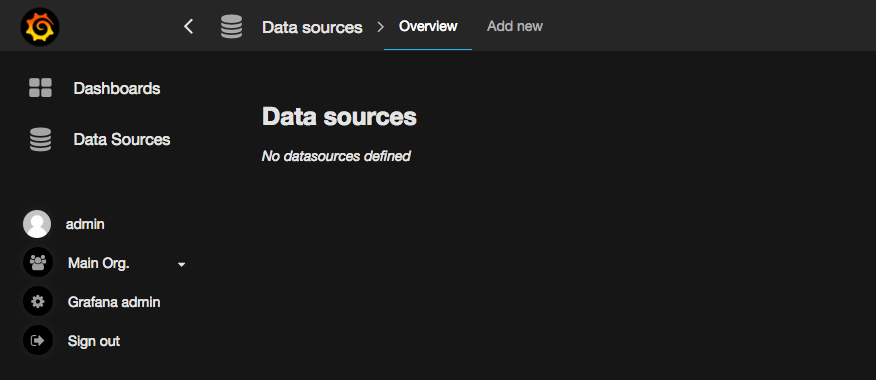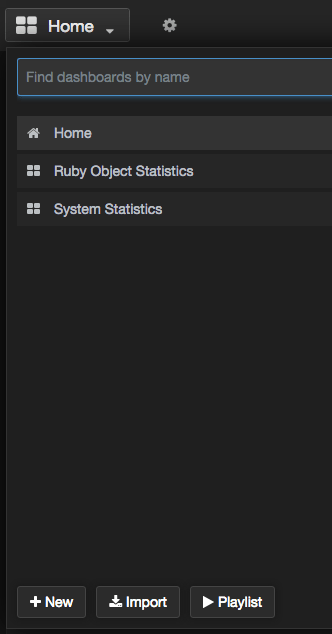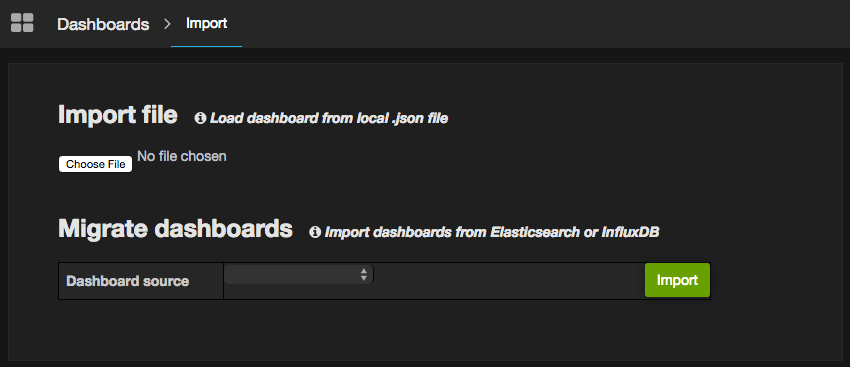Grafana Configuration
Grafana is a tool that enables you to visualize time series metrics through graphs and dashboards. GitLab writes performance data to Prometheus, and Grafana allows you to query the data to display useful graphs.
Installation
Omnibus GitLab can help you install Grafana (recommended) or Grafana supplies package repositories (Yum/Apt) for easy installation. See Grafana installation documentation for detailed steps.
Before starting Grafana for the first time, set the admin user
and password in /etc/grafana/grafana.ini. If you don't, the default password
is admin.
Configuration
- Log in to Grafana as the admin user.
- Expand the menu by clicking the Grafana logo in the top left corner.
- Choose Data Sources from the menu.
- Click Add new in the top bar:

- Edit the data source to fit your needs:

- Click Save.
Import Dashboards
You can now import a set of default dashboards to start displaying useful information. GitLab has published a set of default Grafana dashboards to get you started. Clone the repository, or download a ZIP file or tarball, then follow these steps to import each JSON file individually:
-
Log in to Grafana as the admin user.
-
Click Choose file, and browse to the location where you downloaded or cloned the dashboard repository. Select a JSON file to import:

-
After the dashboard is imported, click the Save dashboard icon in the top bar:

If you don't save the dashboard after importing it, the dashboard is removed when you navigate away from the page.
Repeat this process for each dashboard you wish to import.
Alternatively, you can import all the dashboards into your Grafana instance. For more information about this process, see the README of the Grafana dashboards repository.
Integration with GitLab UI
Introduced in GitLab 12.1.
After setting up Grafana, you can enable a link to access it easily from the GitLab sidebar:
- Navigate to the Admin Area > Settings > Metrics and profiling.
- Expand Metrics - Grafana.
- Check the Enable access to Grafana checkbox.
- Configure the Grafana URL:
-
If Grafana is enabled through Omnibus GitLab and on the same server,
leave Grafana URL unchanged. It should be
/-/grafana. - Otherwise, enter the full URL of the Grafana instance.
-
If Grafana is enabled through Omnibus GitLab and on the same server,
leave Grafana URL unchanged. It should be
- Click Save changes.
GitLab displays your link in the Admin Area > Monitoring > Metrics Dashboard.
Security Update
Users running GitLab version 12.0 or later should immediately upgrade to one of the following security releases due to a known vulnerability with the embedded Grafana dashboard:
- 12.0.6
- 12.1.6
After upgrading, the Grafana dashboard is disabled, and the location of your
existing Grafana data is changed from /var/opt/gitlab/grafana/data/ to
/var/opt/gitlab/grafana/data.bak.#{Date.today}/.
To prevent the data from being relocated, you can run the following command prior to upgrading:
echo "0" > /var/opt/gitlab/grafana/CVE_reset_statusTo reinstate your old data, move it back into its original location:
sudo mv /var/opt/gitlab/grafana/data.bak.xxxx/ /var/opt/gitlab/grafana/data/However, you should not reinstate your old data except under one of the following conditions:
- If you're certain that you changed your default admin password when you enabled Grafana.
- If you run GitLab in a private network, accessed only by trusted users, and your Grafana login page has not been exposed to the internet.
If you require access to your old Grafana data but don't meet one of these criteria, you may consider:
- Reinstating it temporarily.
- Exporting the dashboards you need.
- Refreshing the data and re-importing your dashboards.
WARNING: These actions pose a temporary vulnerability while your old Grafana data is in use. Deciding to take any of these actions should be weighed carefully with your need to access existing data and dashboards.
For more information and further mitigation details, please refer to our blog post on the security release.
Read more on:



